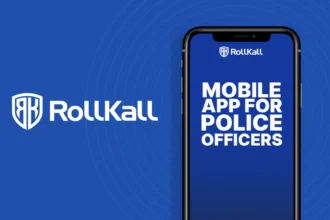Real estate investment has long been considered one of the most reliable paths to building wealth. However, one of the biggest barriers for many aspiring investors is the need for upfront capital. What if you could invest in real estate without putting down any money? In 2024, with creativity and the right strategies, it’s possible to dive into the world of real estate with little to no initial investment. This guide will explore how you can get started, the strategies you can employ, and what to watch out for when investing in real estate with no money down.
Understanding No Money Down Investment
Investing in real estate with no money down essentially means acquiring property without a large out-of-pocket investment. It doesn’t mean that the deal requires no money at all; it simply means you are using creative financing strategies to cover costs. Investors might leverage other people’s money (OPM), financing techniques, or find ways to reduce or eliminate the need for a down payment.
Benefits of No Money Down Investing:
- Lower Financial Barrier: You don’t need a large sum of capital to get started.
- Faster Portfolio Growth: Without the need to save for a down payment, you can expand your investments more quickly.
- Leverage Opportunities: By leveraging other people’s money, you can increase your potential returns.
Challenges of No Money Down Investing:
- Higher Risk: Without a financial buffer, even minor setbacks can have major consequences.
- More Complex Transactions: These deals often involve creative financing, which can require more negotiation and legal expertise.
Strategies for Investing in Real Estate with No Money Down
1. Seller Financing
Seller financing, also known as owner financing, is when the seller of the property finances the purchase for the buyer, eliminating the need for a traditional mortgage. Instead of going through a bank, you pay the seller directly over time.
How it works:
- The seller acts as the lender and sets the terms of the loan, such as the interest rate and repayment period.
- Buyers make monthly payments directly to the seller.
Benefits:
- No bank involvement, which means less stringent credit requirements.
- More flexible payment terms.
Considerations:
- The interest rate may be higher than a traditional mortgage.
- Sellers may require a balloon payment after a certain period.
2. Lease Options
A lease option allows you to rent a property with the option to purchase it later. This strategy gives you time to save for a down payment or improve your financial situation before committing to the purchase.
How it works:
- You sign a lease agreement with the option to buy the property at a predetermined price after the lease period.
- Typically, a portion of your rent may be applied toward the purchase price.
Pros:
- Provides time to build equity before purchasing.
- Low upfront costs compared to buying outright.
Cons:
- You may forfeit the option fee if you decide not to purchase the property.
- The market value could decrease, making the purchase price unattractive.
3. House Hacking
House hacking is when you live in one part of a multi-unit property and rent out the other units to cover the mortgage. This strategy allows you to reduce your living expenses and, in some cases, generate a profit.
How it works:
- Purchase a duplex, triplex, or even a single-family home with extra rooms.
- Rent out the other units or rooms while you live in one part of the property.
Benefits:
- Your tenants’ rent covers the majority (if not all) of your mortgage payments.
- It’s a great way to build equity while minimizing housing costs.
Tips for Success:
- Choose properties in high-demand rental areas.
- Screen tenants carefully to ensure timely rent payments.
4. Partnering with Investors
Partnering with other investors can be a powerful way to enter the real estate market without having to provide all the capital yourself. By forming a partnership, you can combine resources, split responsibilities, and share in the profits.
How it works:
- Find a partner willing to invest their money in exchange for a share of the profits.
- You can contribute sweat equity (managing the property) while your partner provides financial backing.
Pros:
- Low or no upfront capital required on your part.
- Opportunities to invest in larger, more lucrative properties.
Cons:
- You’ll have to split profits with your partner.
- Potential for disagreements over property management and finances.
Practical Steps to Get Started
1. Research and Education Before diving in, make sure to educate yourself about real estate investing. Take advantage of online resources, real estate courses, and investment groups to build your knowledge base.
2. Build Your Network Networking with other investors, real estate agents, and lenders can open doors to new opportunities. Attend local real estate investment meetups or join online communities where you can learn from experienced investors.
3. Find Suitable Properties Look for properties that fit your investment strategy. Tools like real estate listing websites, auction sites, and working with wholesalers can help you find deals that require little to no money down.
Common Mistakes to Avoid
1. Overlooking Due Diligence When investing without putting down a lot of money, it’s tempting to rush into deals. However, skipping proper due diligence can lead to financial disaster. Make sure you thoroughly inspect the property, research the local market, and review all financial documents.
2. Poor Financial Planning Without sufficient planning, you may run into cash flow problems. Even with no money down, there will still be ongoing expenses like maintenance, property taxes, and insurance. Plan for unexpected costs and ensure the property generates enough income to cover them.
3. Ignoring Market Conditions Real estate markets are constantly changing. Investing in a declining market without a safety net can lead to significant losses. Always keep an eye on market trends and be prepared to adjust your strategy if necessary.
Conclusion
Investing in real estate with no money down is entirely possible, especially in 2024, where flexible financing options and creative strategies abound. By leveraging options like seller financing, lease options, house hacking, and partnerships, you can get started in real estate investing without the need for a large down payment. However, it’s crucial to do your research, network with the right people, and avoid common mistakes to succeed in this venture. With the right approach, you can begin building your real estate portfolio and growing your wealth with minimal upfront costs.
For more personalized advice on managing your finances and exploring debt consolidation options, visit My Finance Guider.





